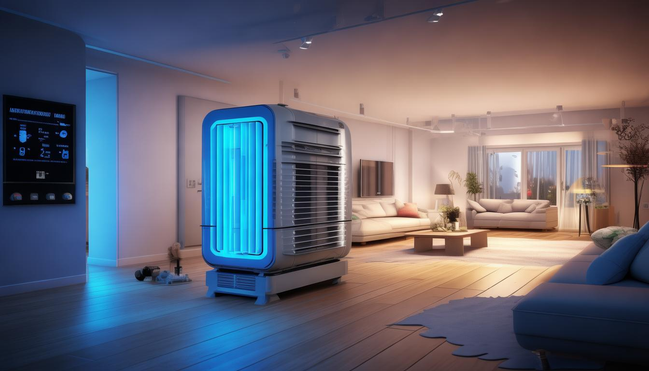Self- HVAC is a HVAC algorithm that can learn by itself! This type of algorithm is very powerful. Traditional algorithms often work according to established programs and basically run like setting the time and temperature mode. And self – HVAC, it is powerful. It can be constantly adjusted and improved according to environmental changes and system usage.
Provide global procurement services for weak current intelligent products! Let’s talk about the specific principles of self-HVAC in detail: first of all, it has the ability to sense. There are a variety of sensors on the system that can measure temperature, humidity, air quality and other indicators. These numerical values are fed back in real time, and the algorithm can know the current environment state based on the data and compare and analyze the required state. For example, the indoor temperature is 25 degrees, but the cooling setting is 22 degrees, and it can find the difference!
Its learning ability is also unique. After each run, analyze the previous strategy and actual results by summarizing experience, and then make adjustments. If some algorithm cannot lower the temperature, then change the method next time you face the same environmental conditions. In addition, it is no problem to calculate future environment and usage trends based on large amounts of data modeling.

Let’s talk about the advantages of self-HVAC. In terms of energy saving, it is really amazing to accurately control the operating status of air conditioning equipment to avoid wasting electricity at all times at maximum power. According to research, some systems with this algorithm can save 20% to 30% energy compared to traditional systems. In terms of comfort, it has also been greatly improved! It will not make the indoor temperature higher and lower at the same time. Control the temperature and humidity and make it reasonable to match everything we stay inside, so comfortable
Let's take a look at what scenarios self-HVAC is suitable for. Commercial buildings are a large suitable place. Like office buildings, there are different temperature demands in different periods of time. Some departments have more people, and some have less cool people. This algorithm can adjust the operation of air conditioners in multiple areas in a targeted manner, meeting comprehensive needs and saving energy.
Provide global procurement services for weak current intelligent products! There are also large shopping malls that are also very suitable. There are many shops in the mall, and the customer flow varies greatly over time. The system can flexibly respond to peak and trough phases to maintain a suitable temperature environment to attract customers.
Let’s talk about the tips for using these algorithms during operation. Regularly checking the system data monitoring page is the basic practice. In this way, you need to find some small changes, outliers, etc. in time. Then, when encountering changes in the environment layout, update this parameter to the system in time. For example, if a new large cabinet is moved in to the office, the data must be synchronized so that the algorithm can re-optimize the strategy. In addition, make sure all sensors are clean and sensitive. Self-learning HVAC algorithms may affect inaccurate measurements and algorithm calculations will also fail.

Now we will answer some doubts clearly. Q: Will the algorithm learn slowly? Answer: The learning speed in the early stage of the new environment may indeed be a bit slow, but the manufacturer sets the basic model when developing in this regard. Moreover, the essence of intelligent algorithms captures trends quickly. In most cases, the effect will be improved after a while. Don’t worry too much.
Q: Are you prone to system failures and interrupting learning? Answer: Normally, the basic hardware and software are stable and intact, and it will not be easily affected, but the equipment will fluctuate when it fails suddenly. It is recommended to make a system backup and redundant design. After repairing the source of the fault in time, it will repair itself and continue to learn.
I think the development of Self-HVAC is promising. With the advancement of technology itself, data computing speed is faster and costs are still declining. In the future, it is very likely that it can even be connected to integrated smart home operations. It is a new technology worth putting more into use!
Leave a Reply